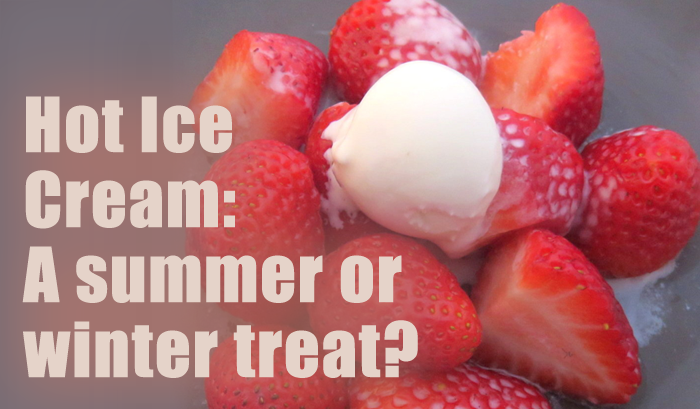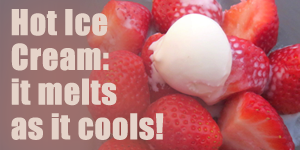Be Cool this Summer with Hot Ice Cream
Just the name of this sweet dessert is mind-boggling! A new kitchen chemistry project at Science Buddies guides students in an exploration of this puzzling kitchen treat that melts as it cools.

Ice cream may be just the thing in summer months, cold, creamy, and sweet. But you need to eat it fast before it melts! The challenge of eating a scoop of ice cream on a cone before it drips off the sides is part of the fun of the popular frozen treat. The hotter it is outside, the more fitting ice cream may seem, and the faster your scoop will melt.
The specific "cold" properties of ice cream make it a recognizable treat, and discerning fans may be able to tell you the difference between ice cream and other frozen treat varieties like gelato, sherbet, or sorbet. Though these varieties use different recipes, they are all similar in that they are a cold, frozen treat. As they warm up, they melt.
Dippin' Dots is a novelty variation that involves flash freezing ice cream in liquid nitrogen. These small candy-like ice cream dots may not look the same as a scoop of ice cream, but they are still cold. They are fun to eat and different, but you still recognize that you are eating an ice cream treat.
New on the fun and funky desserts scene is hot ice cream, a dessert that uses kitchen science to create something completely different and unexpected.
Hot ice cream mixes things up and may play tricks on your brain!
A Hot Twist on a Cold Classic
Hot ice cream is a dessert that is solid (like a scoop of ice cream) when warm but melts when it cools. Just the opposite of ice cream in terms of its behavior in response to temperature, hot ice cream is a fun tongue teaser to make and explore. Making hot ice cream involves adding methyl cellulose to the ice cream mixture. How much do you need? How does it work? At what temperature does hot ice cream melt and how quickly? What is thermal gelling, and how can chefs and cooks take advantage of this science?
The Hot Ice Cream project guides students in making their own hot ice cream and experimenting to find the best recipe. This new food science project provides students with an in-depth procedure through which they experiment to find the amount of time needed to cook hot ice cream and investigate how the cooking time relates to how long it takes the dessert to melt.
Using the recipe in the project, families can experiment with hot ice cream this summer for an unexpected treat!
Related Kitchen Science
Hot ice cream uses molecular gastronomy science to transform a familiar food through the use of unusual, but food-safe, ingredients. Other fun molecular gastronomy food science experiments involve using spherification to turn juice into small balls (or boba) and using reverse spherification to turn yogurt into ravioli-shaped pieces.
For more traditional ice cream fun this summer, make ice cream in a bag!
For other fun kitchen science experiments and activities, see this collection of Kitchen Science projects.
Categories:
You Might Also Enjoy These Related Posts:
- Plastics and Earth Day - Science Projects
- Arduino Science Projects and Physical Computing
- 10+ Robotics Projects with the BlueBot Kit
- 5 STEM Activities with Marshmallow Peeps
- March Madness Basketball Science Projects: Sports Science Experiments
- Women in STEM! More than 60 Scientists and Engineers for Women's History Month
- Explore Artificial Intelligence and Machine Learning with Student AI Projects
- 10 Reasons to Do the Rubber Band Car Engineering Challenge










